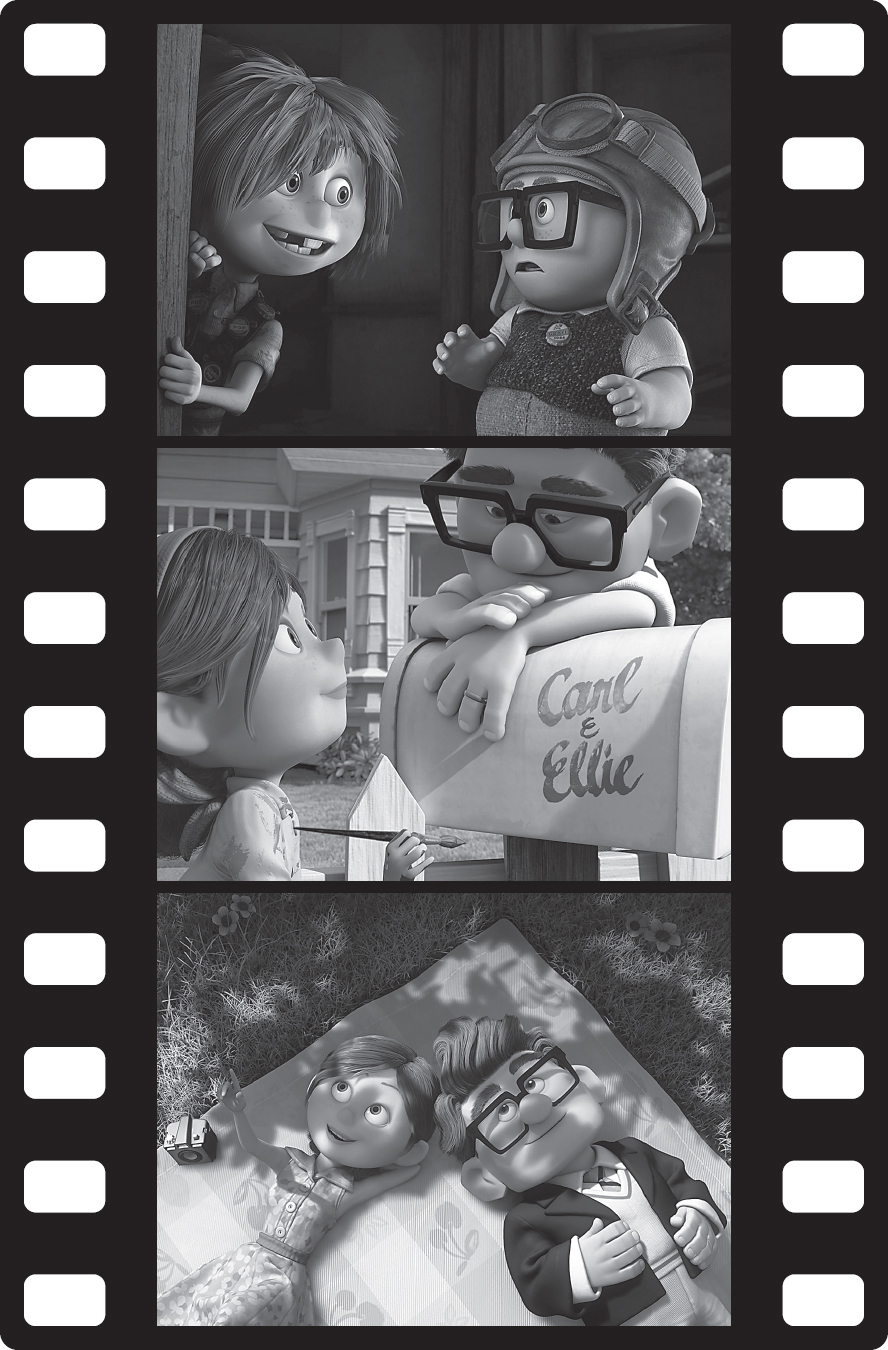5 Nonverbal Communication
5 Nonverbal Communication
Page 96

IN CHAPTER 5
The Nature of Nonverbal Communication
Functions of Nonverbal Communication
Nonverbal Communication Codes
Influences on Nonverbal Communication
 Look for LearningCurve throughout the chapter to help you review.
Look for LearningCurve throughout the chapter to help you review.
bedfordstmartins.com/commandyou
Can you tell a compelling, believable, and heartwarming love story in just four minutes—without using any words? Pixar’s Academy Award–nominated Up (2009) does just that (Docter & Peterson, 2009). After opening with a simple meet-cute between young, quiet Carl and adventurous, talkative Ellie, the sequence that follows offers a montage of life moments, explained simply and graphically: Carl and Ellie express affection by holding hands and devotion by the cross-my-heart gesture of their childhood. Their dreams of children are symbolized in visions of baby-shaped clouds, and as those dreams are crushed, their grief is conveyed by Ellie’s silent sobs and Carl’s quiet gestures of comfort. As the years go by, their plans to travel are shown with paintings and brochures; their financial struggles, through vignettes detailing home repairs, car troubles, and medical bills. Relying entirely on nonverbal behaviors and set to a mesmerizing musical score, the sequence clearly conveys the events and emotions that shaped these characters’ decades-long romance, as well as Carl’s loneliness and isolation after Ellie’s death—without a word of dialogue.
The filmmakers at Pixar were no strangers to near “silent” films. One previous offering, the equally stunning WALL-E (2008), included virtually no dialogue for the first forty minutes, in what the British newspaper the Independent called “a masterclass in non-verbal communication” (Quinn, 2008, para. 7). During those scenes, the film created compelling characters out of a pair of robots and a lone, unspeaking cockroach. It also presented in a simple, accessible way a fairly complicated story line of environmental devastation.
CHAPTER OUTCOMES
After you have finished reading this chapter, you will be able to
Describe the power of nonverbal communication.
Outline the functions of nonverbal communication.
Describe the set of communication symbols that are nonverbal codes.
Illustrate the influences culture, technology, and situation have on our nonverbal behavior.
Telling a story on screen is complicated because filmmaking encompasses nonverbal performances (be they by actors or by animations). These performances include the visual choices made by the artists and directors, from colors used in a scene’s background to the characters’ clothing. For animators like the team at Pixar, the challenge is even more daunting. They must make objects—whether computer-generated “people” like Carl and Ellie or robots (or fish or toys or insects)—into believable, humanlike characters who can effectively communicate complex information and emotions.
Likewise, in real life, we communicate with many tools other than language. In this chapter, we examine nonverbal communication—the process of intentionally or unintentionally signaling meaning through behavior rather than words (Knapp & Hall, 2010). This definition encompasses a variety of actions, such as gestures, tone of voice, and eye behavior, as well as all aspects of physical appearance. We begin by examining the nature and functions of nonverbal communication. Then we move to the nonverbal codes that convey messages.